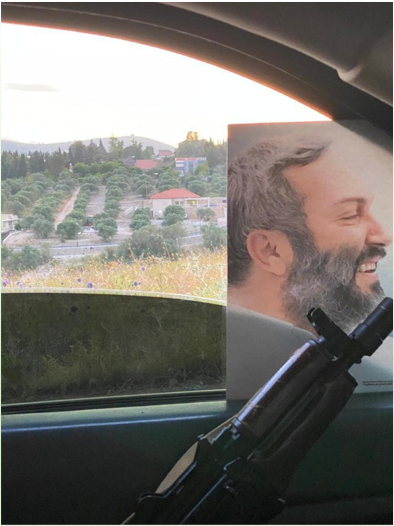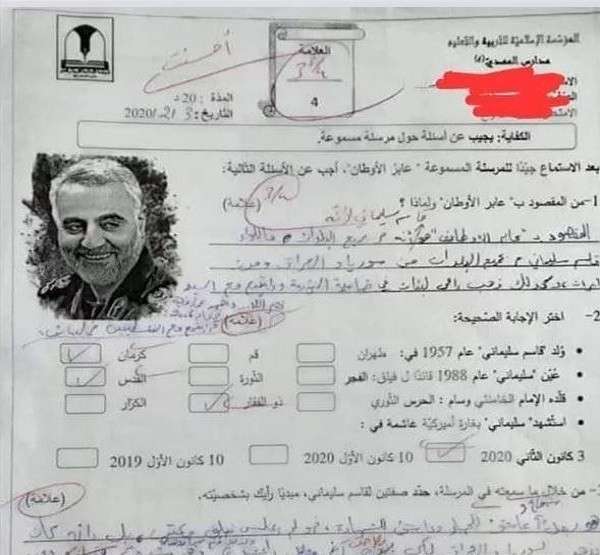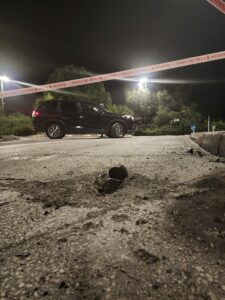Hezbollah’s main narratives on social media portray real and fake news using graphics, visuals, camera effects, symbols, and more. We found several main narratives that repeatedly and frequently appear, together forming Hezbollah’s unique message:
- The glorification of the Resistance – Hezbollah sees itself as the defender of Lebanon. Hezbollah does not see itself as a terror organization that only harasses Israel but rather as an organization that will stop Israel and prevent it from realizing its plans.
- Demoralization of IDF soldiers – Hezbollah, addressing the low-ranking IDF soldiers, ridicules their operational discipline.
- Scorn of the IDF – Hezbollah belittles IDF’s power and capabilities and accentuates its flaws.
- Threatening the northern Israeli communities, the State of Israel, and the IDF – Hezbollah emphasizes its threat on Israel, and its operational and geographical control of the Israeli citizens, primarily of the northern Israeli communities.
- The Resistance heroes and the Shaheeds – Hezbollah’s celebrities.
1. Glorification of the Resistance
Portrayed via videos and images emphasizing and glorifying Hezbollah’s military advantages.
يوم سحقوا التكفيري في أصعب تضاريس الأرض…❤️ pic.twitter.com/SJS2qZZWgX
— 🇱🇧🟡 شباب حزبُ الله | لبنان 🟡🇱🇧 (@hizzbollah_leb) November 6, 2020
We also notice Hezbollah’s flag in many videos and photos:



2. “demoralization of the IDF”
Hezbollah expresses its “demoralization of the IDF” motif in the following video that ridicules the IDF soldiers’ operational procedures and drills and depicts them “cowering behind cover” while being laughed at by Lebanese kids.
Occasionally, Hezbollah publishes authentic material published in Israel or Lebanon accentuating IDF’s failures.
On September 5, 1997. A unit from the Israeli Navy’s special operation unit, Shayetet 13, on a mission in South Lebanon, stumbled into a deadly ambush by Islamic Resistance guerrillas. Twelve Israeli soldiers were killed, which was the worst Israeli single-day casualty toll in Lebanon since 1985. Every year, on that date, we can find on Hezbollah social media videos and memes mocking the operation.
3. “scorn of the IDF”
The “scorn of the IDF” motif is expressed in the following video which shows pictures of IDF commanders (IDF ranks and symbols) playing together with toy tanks, toy jets, and “Toy Story” toy soldiers, which present the IDF as “the Toy Army, [which is] powerful but does not show up [at the scene]”
4. “threatening of the northern Israeli communities”
The “threatening of the northern Israeli communities” motif is expressed in the following video – the Hezbollah flag can be seen in front of a military outpost overlooking the Jewish community of Metulah, the Hezbollah flag much bigger in comparison to the Israeli flag. Joyful and dramatic music, almost a military march, is playing in the background. The song speaks about the sun-colored flag and about the Shaheed (the death culture is another main narrative).

At the bottom-left corner of the image, in yellow, is the Central Combat Advocacy Unit’s logo. This is Hezbollah’s advocacy unit that is responsible for all the organization’s propaganda. It was also responsible for the documentation of Hezbollah’s operations against IDF outposts in the buffer zone between Israel and Lebanon until Israel’s withdrawal from Lebanon in May 2000.
An example for a video with a military threat that reminds us of the attack on the INS Hanit at the start of the Second Lebanon War in 2006:
5. “Heroes of the Resistance and the Shaheeds”
Many images and videos of Imad Mughniyeh were used in the “Heroes of the Resistance and the Shaheeds” motif. Imad Mughniyeh – Hezbollah’s “Chief of Staff”, was one of the organization’s founders. He formulated the plans targeting the IDF soldiers in 2000 and 2006 and numerous other terror operations against Israel. According to foreign media outlets, he was eliminated by Israel in Damascus in 2008.




Qassem Soleimani – commander of the Iranian Islamic Revolution Guard Corps (IRGC), was a direct patron of all proxies deployed by Iran in the Middle East, Hezbollah the most prominent one. Soleimani had close ties with Nasrallah, and Soleimani’s killing in January 2020 by the United States dealt a severe emotional and professional blow to Nasrallah. Hezbollah greatly uses Soleimani’s pictures in the information warfare with Israel.




The picture was published by the official website of Iranian Supreme Leader Khamenei (left)
Hassan Nasrallah – secretary-general of Hezbollah, in contrast with other leaders around the world, Nasrallah has not participated in public events in the last several years (he was seen in public in 2015), making his addresses on the different media networks his primary way of communicating with his supporters. He is also the main figure featured on social media. Photos and videos of him from past and present as well as quotes from speeches used as a voiceover in the background of videos.



The following video presents 3 main elements, Nasrallah, the military, and the flag:
In conclusion, these motifs are widely and continually presented, which shows that they are based on one conceptual basis and are preplanned. Although graphics and posters with Hebrew and sometimes even English text are occasionally seen, most materials are published in Arabic. Lebanon’s social media is open to the general public, but very few Israelis are exposed to it in practice. No efforts are made to convey messages to Israeli citizens that are south of the border. Even the posters posted close to the border fence facing Israel are not seen by more than a handful of farmers on their way to their farms or by IDF soldiers in vehicles patrolling the border fence.
When we examine the campaign’s guidelines, we can identify the goal it serves – the strengthening of Hezbollah’s narratives.
Hezbollah’s vast power is derived from the firm belief in it and in its way. Hezbollah depends on its Shiite “base” in Lebanon – Shiite residents of southern Lebanon, Beqaa, and Beirut. Hezbollah’s entire military infrastructure is spread out among the Lebanese civilian population, which it uses as a human shield. Hezbollah’s capabilities depend on the support of the Lebanese, and therefore Hezbollah’s preservation of its supporters has a much higher priority than any tactical achievement in the field. We are not claiming that every one of the information warfare’s campaigns is directed inward at its citizens only, but rather that this is Hezbollah’s first and primary goal.
Is the information warfare against Israel, As reflected in the narratives described in this article, working? In our opinion, the influence of pictures, graphics, and videos can be immediately quashed. As the posts/tweets do not reach most Israelis, there is a high likelihood that they do not affect the Israeli citizens’ outlook on Hezbollah’s threat or Israel’s emotional resilience.






